Abstract
1. The aim of this study has been to investigate the receptor origin of postsynaptic actions evoked by group II muscle afferents in mid-lumbar segments of the cat spinal cord. The experiments tested the hypothesis that the afferents involved were the secondary endings of muscle spindles. 2. Spindle afferents were activated by contractions of intrafusal muscle fibres which were induced by electrical stimulation of fusimotor axons in the distal parts of transected ventral roots by one to three stimuli at 150-500 stimuli/s. A separate series of experiments has shown that such stimuli are effective in activating a considerable proportion of muscle spindle secondaries when contractions of extrafusal muscle fibres are eliminated by differential fatigue of these fibres, provided that several fusimotor axons are stimulated simultaneously. 3. Extracellular field potentials were recorded in the dorsal horn, at such locations where synaptic actions were evoked by electrical stimulation of group II but not group Ia muscle spindle or group Ib tendon organ afferents of pretibial flexors. Effects of activation of spindle afferents following stimulation of fusimotor axons were then compared with effects evoked by electrical stimulation of group II afferents of anterior tibial or extensor digitorum longus nerves and by small stretches of these muscles. 4. Distinct field potentials were evoked by stimulation of ventral root fibres at all locations at which field potentials were obtained from group II afferents stimulated electrically. The latencies of these field potentials were in both cases shorter in the dorsal horn than in the ventral horn. 5. The appearance of these field potentials was not related to contractions of extrafusal muscle fibres and was also observed when these contractions were practically eliminated. Furthermore, their threshold and similar dependence on a potentiating effect of two to three stimuli, as found for single secondaries, allow them to be attributed to secondary endings of muscle spindles.
Full text
PDF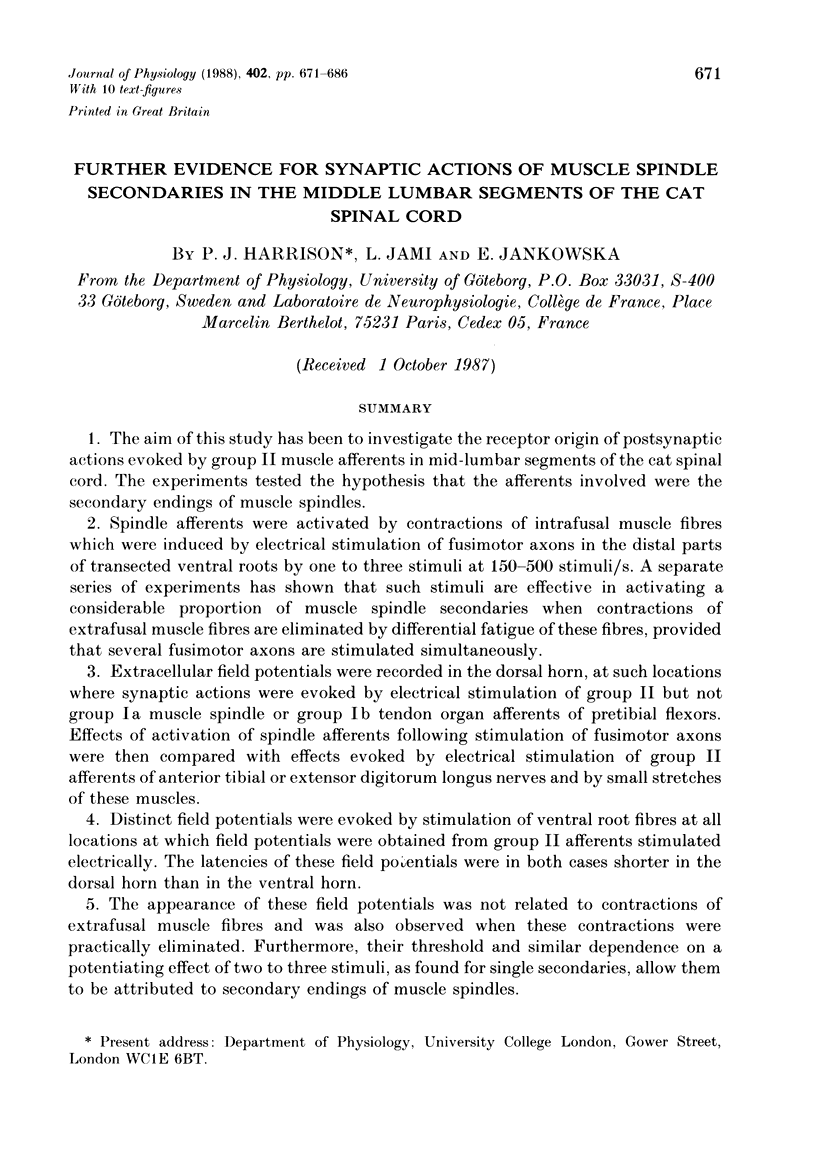
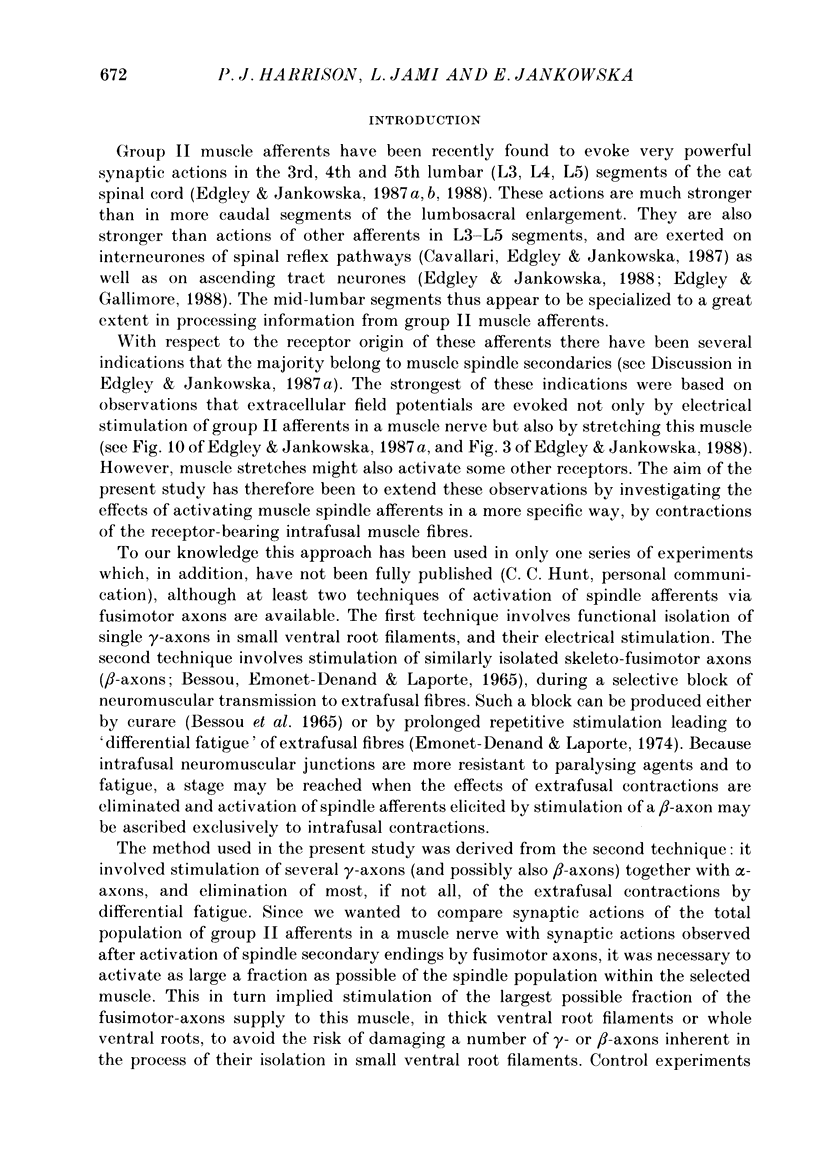
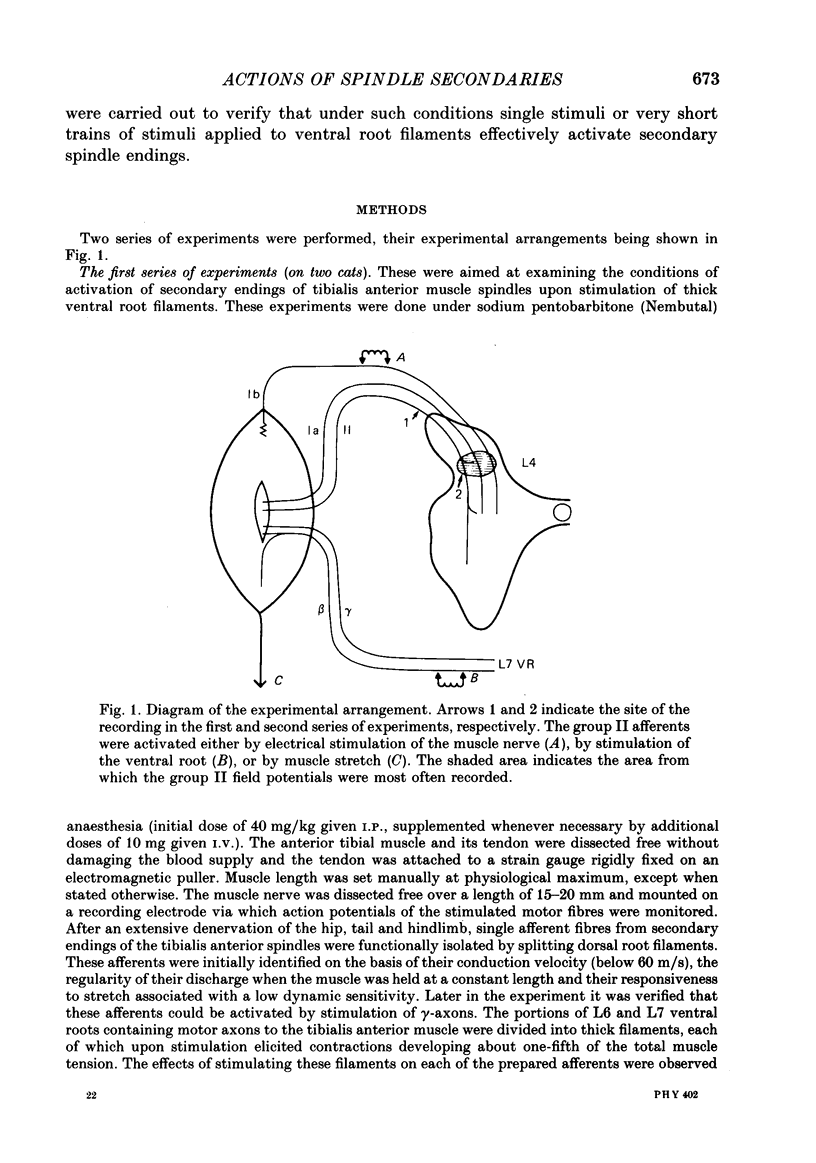
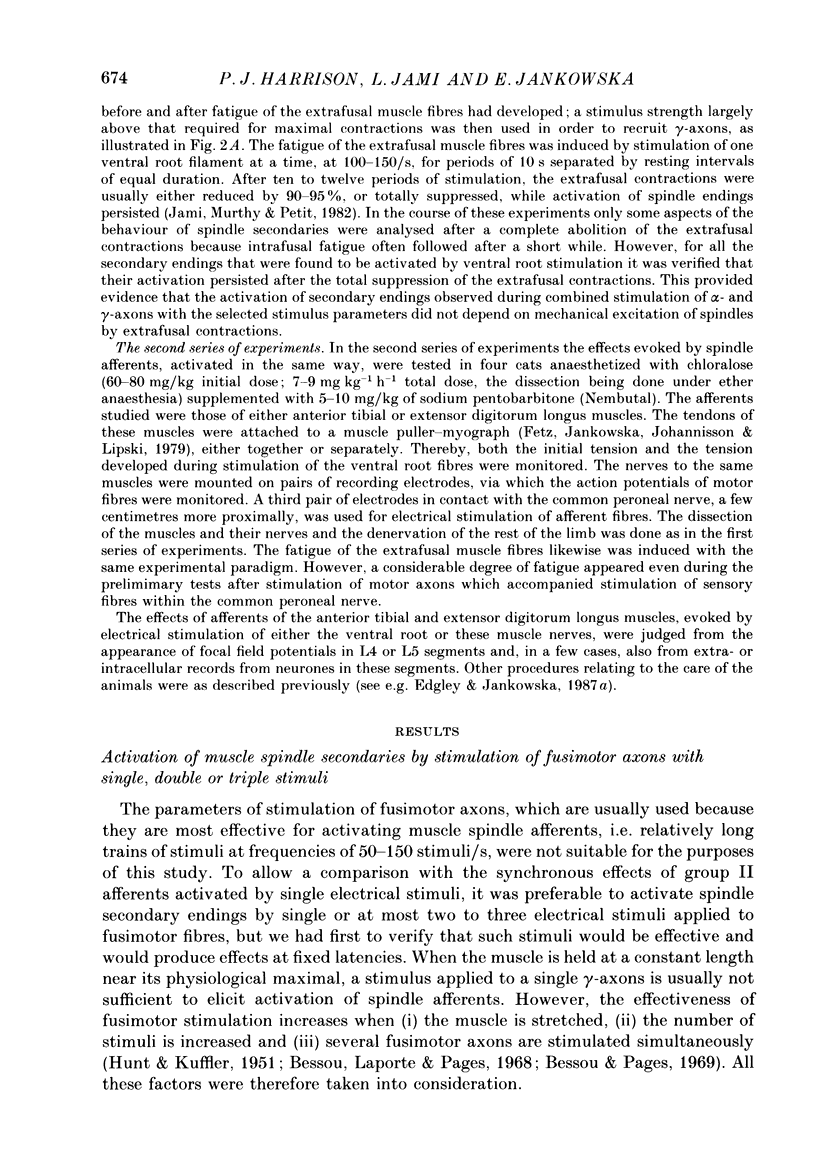
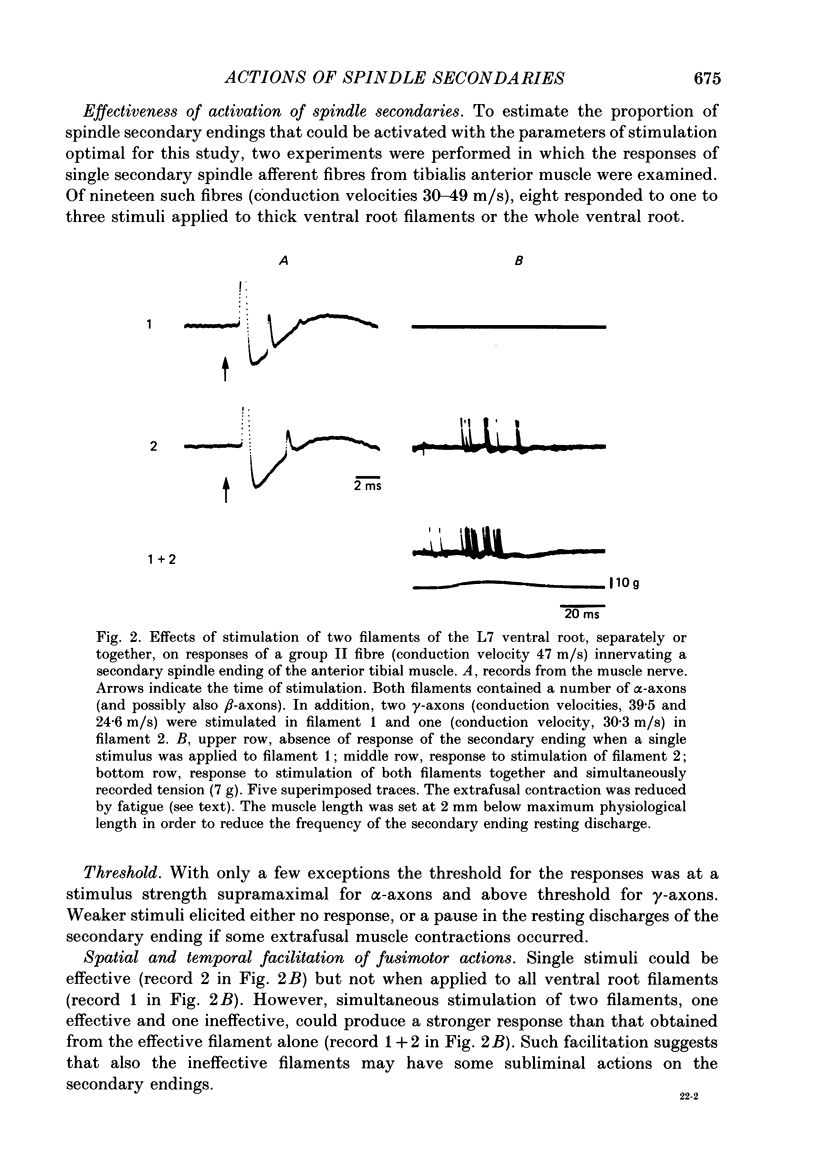
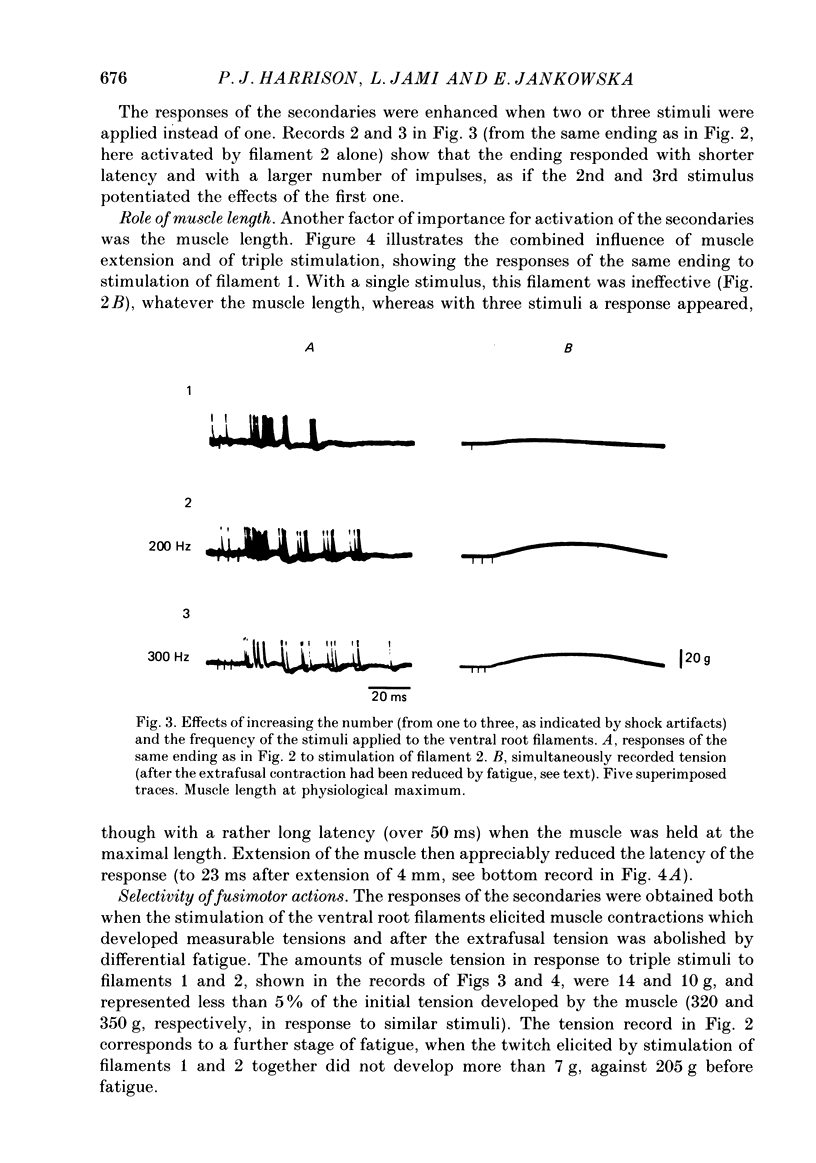
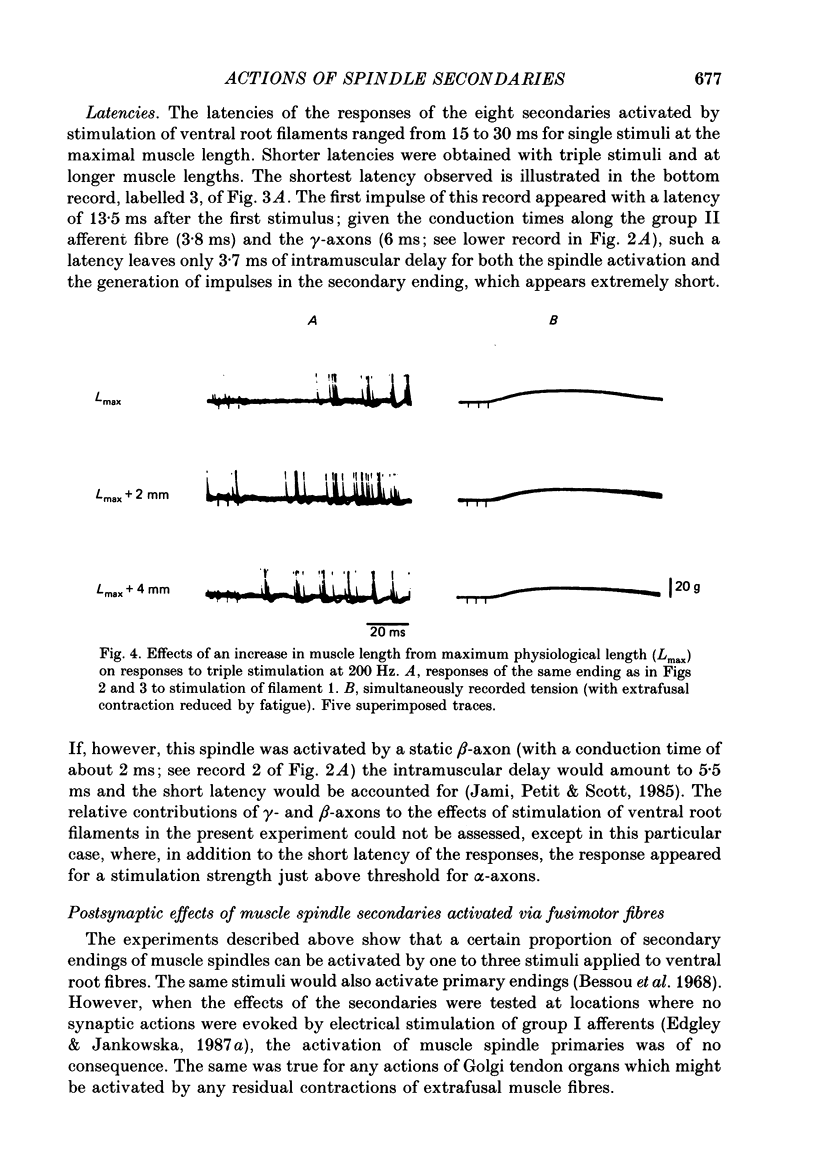
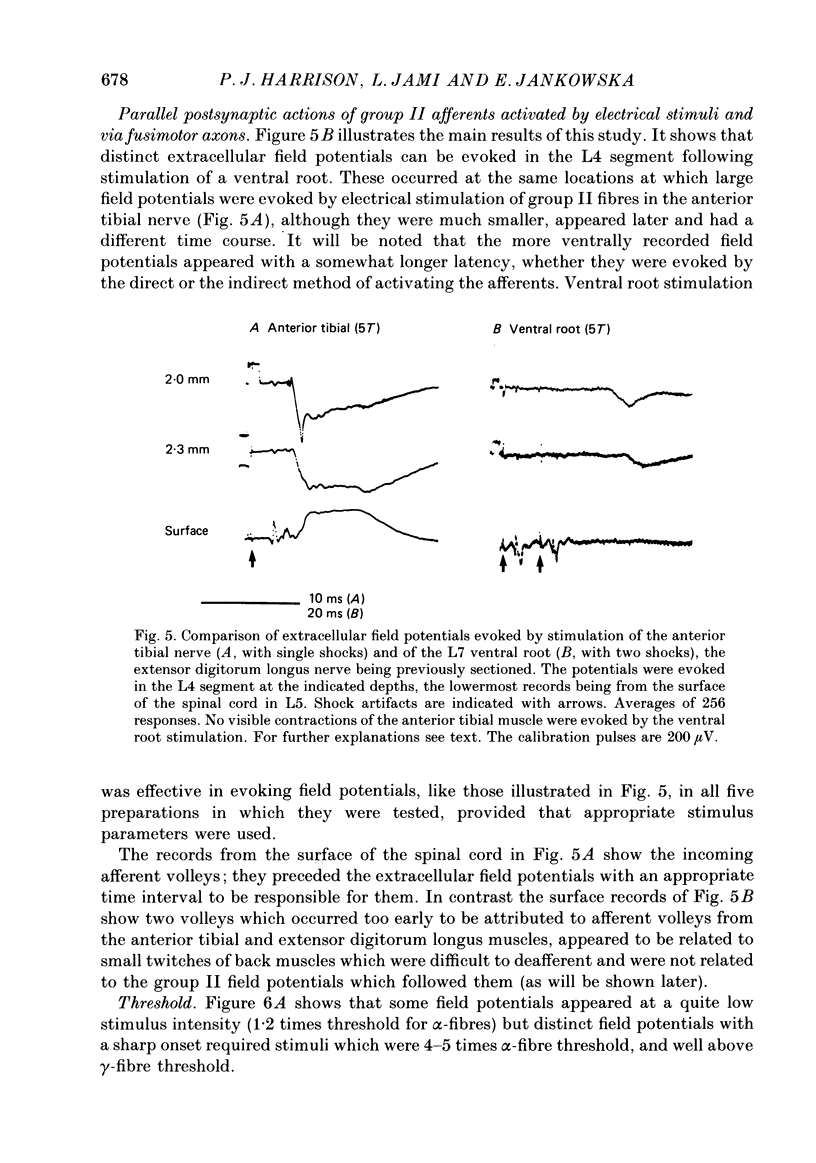
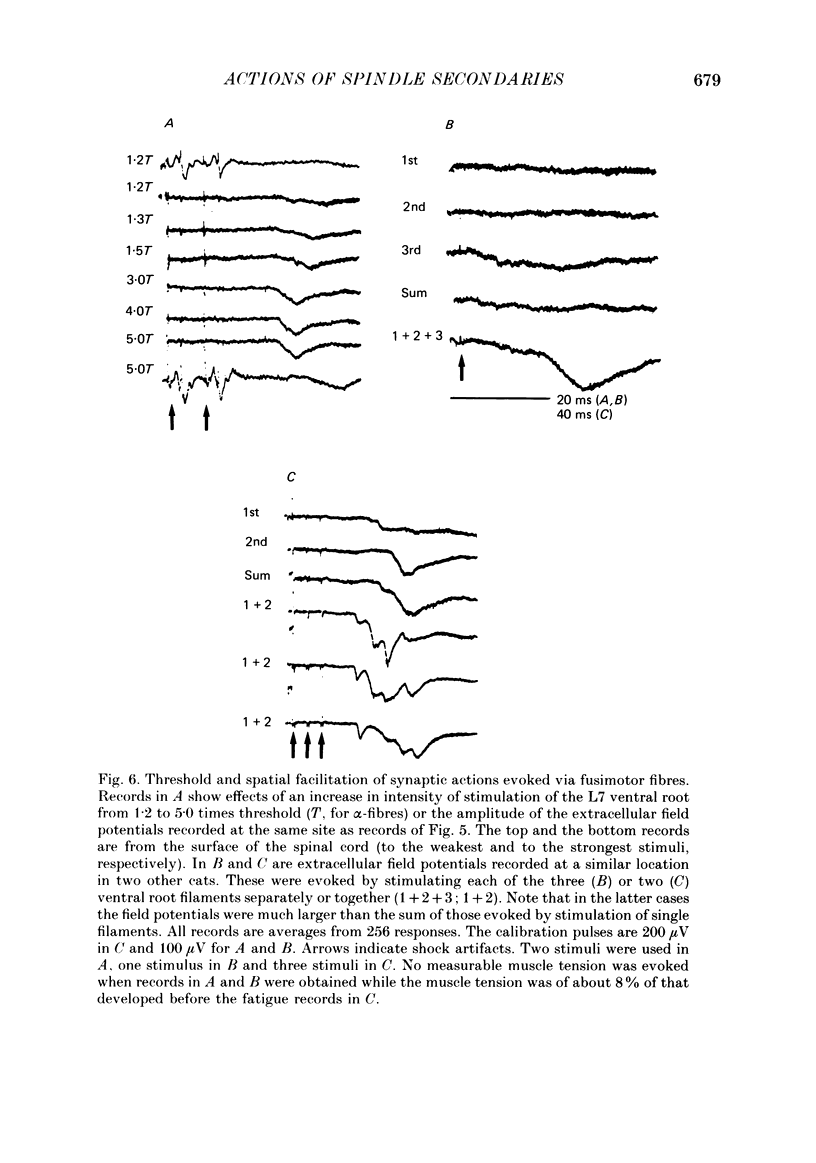
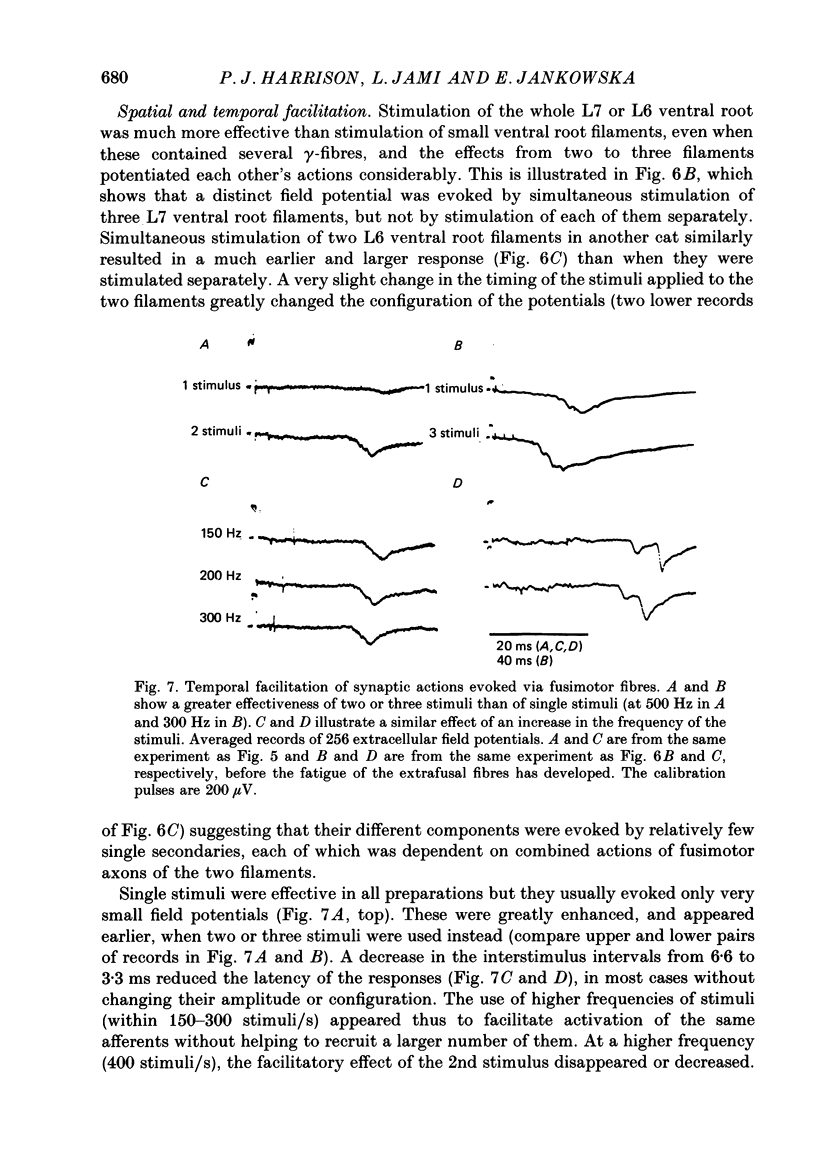
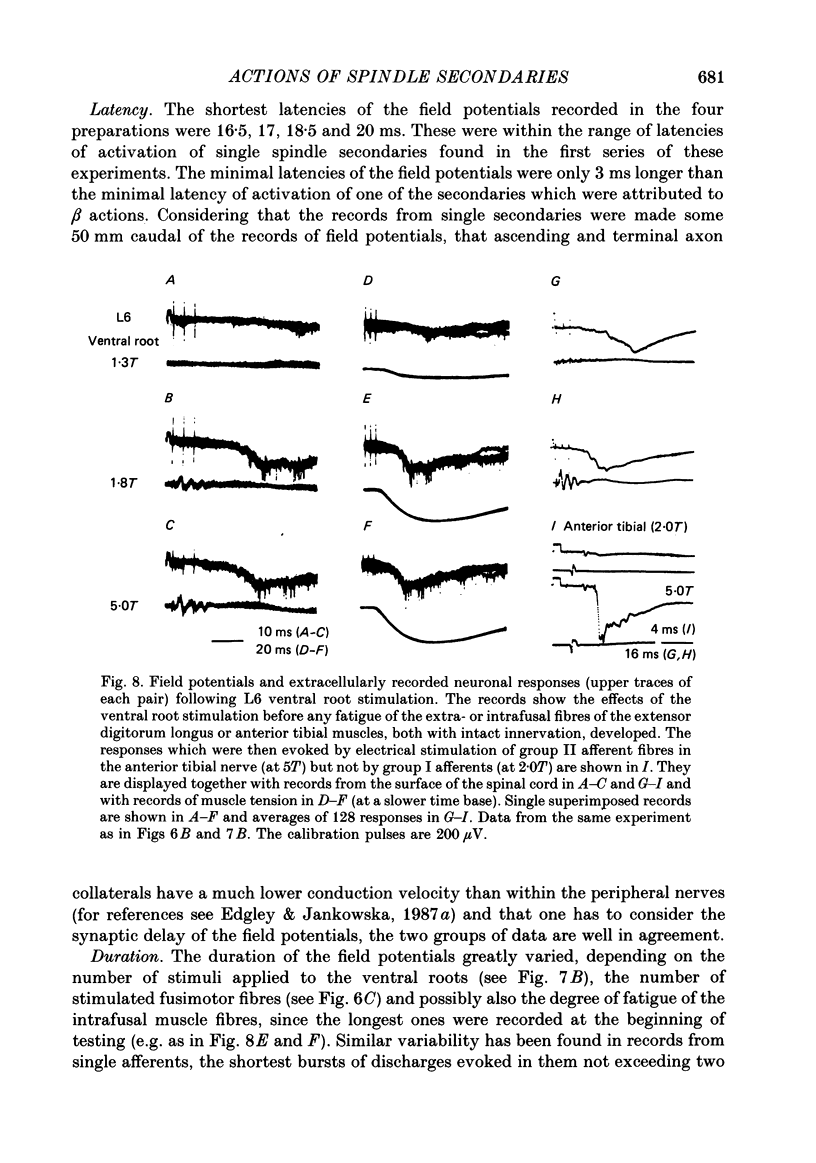
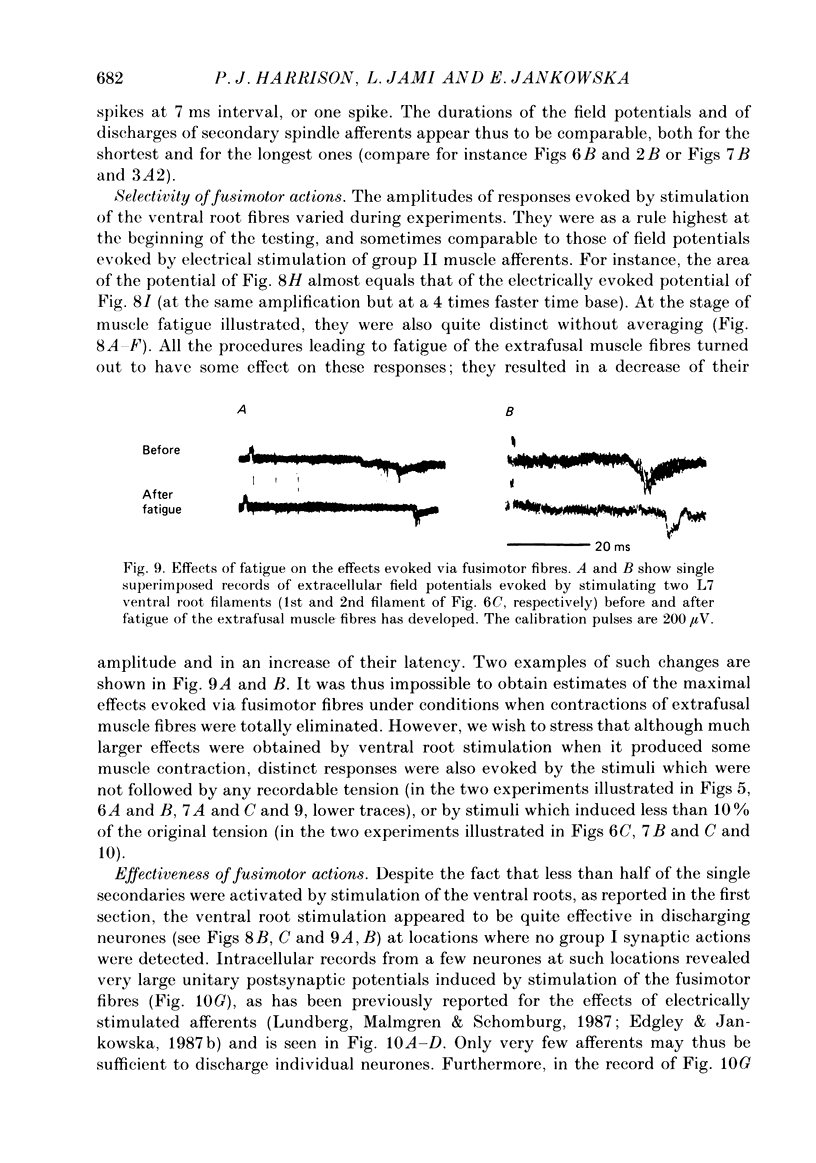
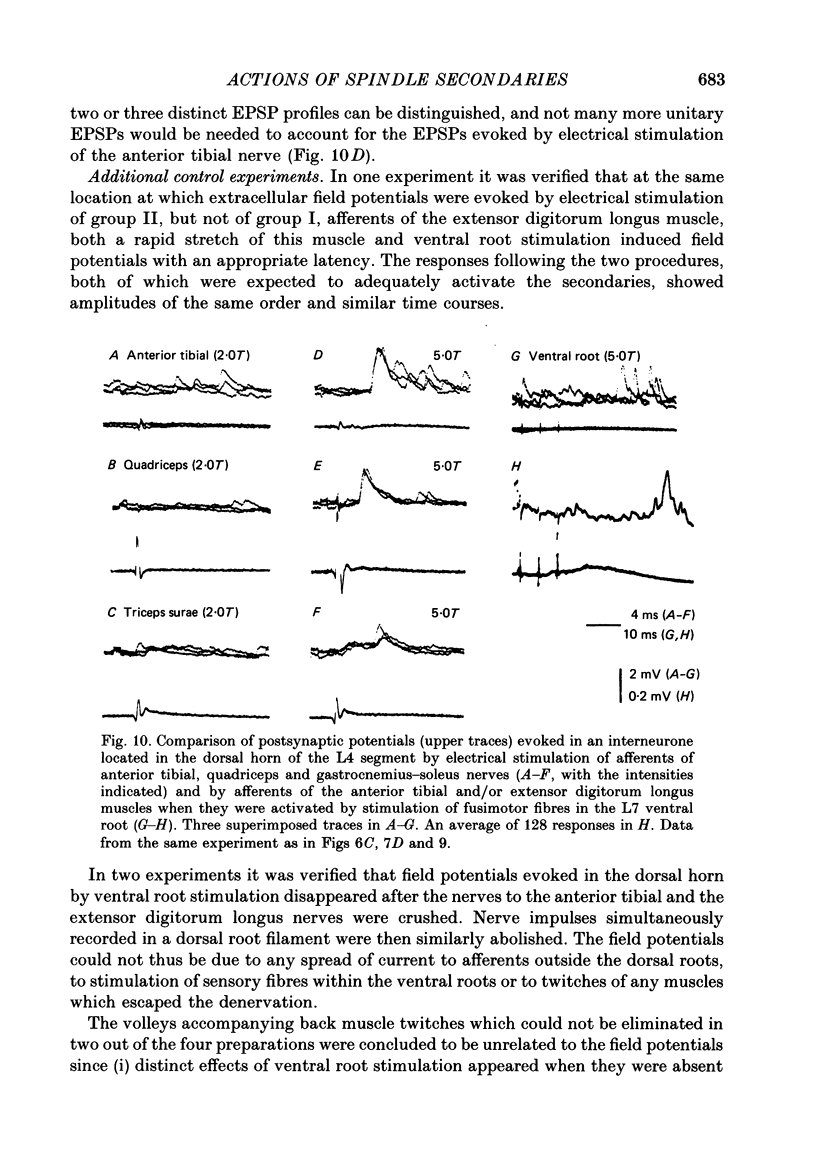


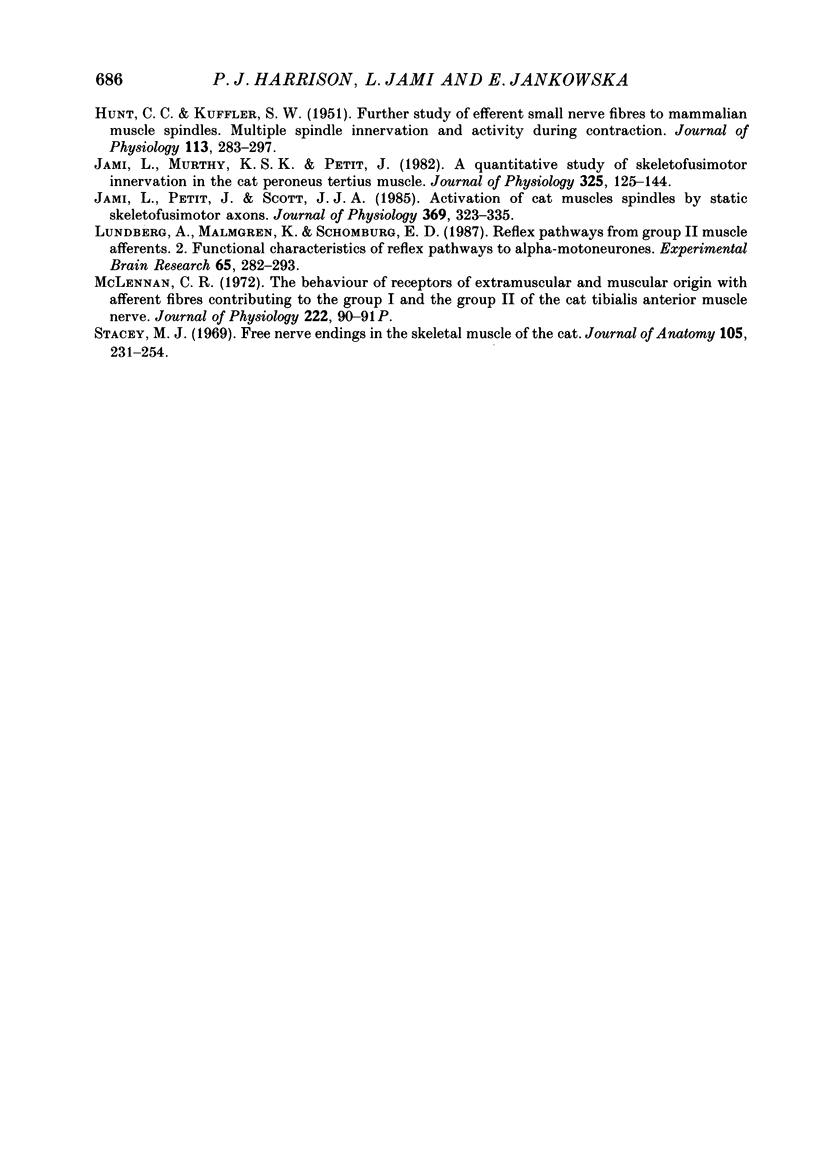
Selected References
These references are in PubMed. This may not be the complete list of references from this article.
- Bessou P., Emonet-Dénand F., Laporte Y. Motor fibres innervating extrafusal and intrafusal muscle fibres in the cat. J Physiol. 1965 Oct;180(3):649–672. doi: 10.1113/jphysiol.1965.sp007722. [DOI] [PMC free article] [PubMed] [Google Scholar]
- Bessou P., Laporte Y., Pagès B. Frequencygrams of spindle primary endings elicited by stimulation of static and dynamic fusimotor fibres. J Physiol. 1968 May;196(1):47–63. doi: 10.1113/jphysiol.1968.sp008493. [DOI] [PMC free article] [PubMed] [Google Scholar]
- Bessou P., Pagès B. Spindle secondary ending responses elicited by stimulation of static fusimotor axons. J Physiol. 1969 Jun;202(3):569–584. doi: 10.1113/jphysiol.1969.sp008828. [DOI] [PMC free article] [PubMed] [Google Scholar]
- Cavallari P., Edgley S. A., Jankowska E. Post-synaptic actions of midlumbar interneurones on motoneurones of hind-limb muscles in the cat. J Physiol. 1987 Aug;389:675–689. doi: 10.1113/jphysiol.1987.sp016677. [DOI] [PMC free article] [PubMed] [Google Scholar]
- Cleland C. L., Rymer W. Z., Edwards F. R. Force-sensitive interneurons in the spinal cord of the cat. Science. 1982 Aug 13;217(4560):652–655. doi: 10.1126/science.7089586. [DOI] [PubMed] [Google Scholar]
- Edgley S. A., Gallimore C. M. The morphology and projections of dorsal horn spinocerebellar tract neurones in the cat. J Physiol. 1988 Mar;397:99–111. doi: 10.1113/jphysiol.1988.sp016990. [DOI] [PMC free article] [PubMed] [Google Scholar]
- Edgley S. A., Jankowska E. An interneuronal relay for group I and II muscle afferents in the midlumbar segments of the cat spinal cord. J Physiol. 1987 Aug;389:647–674. doi: 10.1113/jphysiol.1987.sp016676. [DOI] [PMC free article] [PubMed] [Google Scholar]
- Edgley S. A., Jankowska E. Field potentials generated by group II muscle afferents in the middle lumbar segments of the cat spinal cord. J Physiol. 1987 Apr;385:393–413. doi: 10.1113/jphysiol.1987.sp016498. [DOI] [PMC free article] [PubMed] [Google Scholar]
- Edgley S. A., Jankowska E. Information processed by dorsal horn spinocerebellar tract neurones in the cat. J Physiol. 1988 Mar;397:81–97. doi: 10.1113/jphysiol.1988.sp016989. [DOI] [PMC free article] [PubMed] [Google Scholar]
- Emonet-Dénand F., Laporte Y. Blocage neuromusculaire sélectif des jonctions extrafusales des axones squeletto-fusimoteurs produit par leur stimulation répétitive á fréquence élevée. C R Acad Sci Hebd Seances Acad Sci D. 1974 Dec 23;279(26):2083–2085. [PubMed] [Google Scholar]
- Fetz E. E., Jankowska E., Johannisson T., Lipski J. Autogenetic inhibition of motoneurones by impulses in group Ia muscle spindle afferents. J Physiol. 1979 Aug;293:173–195. doi: 10.1113/jphysiol.1979.sp012884. [DOI] [PMC free article] [PubMed] [Google Scholar]
- HUNT C. C., KUFFLER S. W. Further study of efferent small-nerve fibers to mammalian muscle spindles; multiple spindle innervation and activity during contraction. J Physiol. 1951 Apr;113(2-3):283–297. doi: 10.1113/jphysiol.1951.sp004572. [DOI] [PMC free article] [PubMed] [Google Scholar]
- Jami L., Murthy K. S., Petit J. A quantitative study of skeletofusimotor innervation in the cat peroneus tertius muscle. J Physiol. 1982 Apr;325:125–144. doi: 10.1113/jphysiol.1982.sp014140. [DOI] [PMC free article] [PubMed] [Google Scholar]
- Jami L., Petit J., Scott J. J. Activation of cat muscle spindles by static skeletofusimotor axons. J Physiol. 1985 Dec;369:323–335. doi: 10.1113/jphysiol.1985.sp015904. [DOI] [PMC free article] [PubMed] [Google Scholar]
- Lundberg A., Malmgren K., Schomburg E. D. Reflex pathways from group II muscle afferents. 2. Functional characteristics of reflex pathways to alpha-motoneurones. Exp Brain Res. 1987;65(2):282–293. doi: 10.1007/BF00236300. [DOI] [PubMed] [Google Scholar]
- Stacey M. J. Free nerve endings in skeletal muscle of the cat. J Anat. 1969 Sep;105(Pt 2):231–254. [PMC free article] [PubMed] [Google Scholar]


